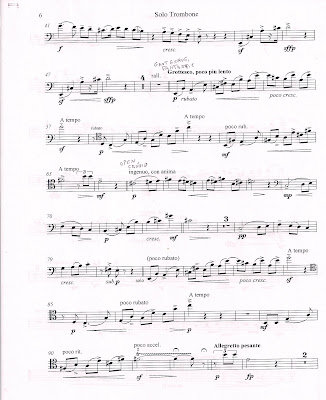
It's the end of semester at many music schools and that means one thing: juries!
And so the subject of nerves comes up.
So, there you are, before your big performance. As you sit and wait, you try repeating to yourself, "I'm going to play great. I'm going to play great."
The problem is there is probably a little voice that responds to those affirmations with, "Bulls**t, Bulls**t, Bulls**t"
So here's a way to re-frame that situation that might help.
As you sit there, say to yourself, "It would feel so good to nail this." As you say this, imagine EXACTLY what it would be like to totally nail it.
- How would you stand?
- How would you breathe?
- How would that first note sound?
- How would it flow, musically?
In other words, you take a HOPEFUL ATTITUDE.
"I don't know if I'll mess up or play great, but I can imagine what it would feel like to play great."
Each phrase presents you with another chance to have that wonderful experience of playing great. Once that phrase has ended, forget it (good or bad) and point your mental "headlights" to the next phrase. It's almost as if you have a little hopeful car shining headlights onto the next phrase as it comes up (and nothing else in the world!).
Fear and stage fright are the dragon standing between you and success. Think of this simple hopeful attitude as your shield against that fear.










































